Classic Movies, Under the Stars, in a Historic Setting
A Classic Hollywood Blog
The Sheboygan County Historical Museum hosted it’s first ever Outdoor Movie Night on July 12, 2019. There was so much anticipation leading up to the night and we were thrilled with the turn out! All ages and generations came out to enjoy Singin’ in the Rain (1952), including families with younger kids and teens, and young couples on dates – cue the aww factor! Everyone enjoyed popcorn while watching cartoons and our feature film in front of the historic 1864 Weinhold Log Cabin. We started the night with free admission to the Museum for those that came early at 7:30pm. An hour later we watched a few old fashioned Mickey Mouse Cartoons. Then finally after much anticipation, dusk completely fell and it was time to start our featured film!
I welcomed everyone and gave a short introduction about the making of Singin’ in the Rain. I tried to channel my best Robert Osborne as I talked about the actors, some of the behind the scenes details, and things to watch for. As my friends and family know, I am a walking, talking fun fact book when it comes to Classic Hollywood. I love the Golden Age of Hollywood, especially the great musicals. Whenever we watch a classic film, I can’t help but share the random tid bits of knowledge that I know about the film or the actors as we watch. My husband Josh is probably always on fun fact overload, but he has learned so much! So of course, having a movie night has been on the top of my list of events to do since I started at the Museum as the Program Coordinator. And I couldn’t wait to introduce the movie. To prepare I decided to reach the book Singin’ in the Rain: The Making of an American Masterpiece (2009) by Earl J. Hess and Pratibha A. Dabholkar. I did not have to read the whole thing to come up with a 7 minute introduction, but I am a movie nerd and couldn’t help myself! I highly recommend this book if you would like to know more about what it took to make the film. It’s so detailed that it even provides a breakdown of the production schedule on certain days of filming, including when they took lunch or had to pause to fix something. This book is available at the Mead Public Library in Sheboygan (I know, because I just returned it on Monday), as well as a few other libraries in the area.
After reading a whole book on Singin’ in the Rain, the new question was how would I pick and choose what to say? It was no easy task. So for those of you who were not able to join us on Friday, or would like more information, continue reading for all the fun facts! And thank you so much for all of the wonderful feedback about our first Outdoor Movie Night. We are so excited that you want us to keep doing them in the future. Stay tuned for announcements for our 2020 programming line up and when our next movie night(s) will be.
Chloe’s Fun Facts for Singin’ in the Rain:
Singin’ in the Rain was produced by the legendary Arthur Freed who is credited with orchestrating the golden age of musicals at MGM, and it also features all of his own music. Freed started out as part of a popular songwriting team with Herb Brown in the 1920’s. He later became the head of the musical unit at MGM in 1939. If you’ve heard some of the songs in Singin’ before, that’s because Freed and Brown’s music was used in many early movies. Freed dreamed of someday making a movie that would contain all of their music though. He had no idea what it would be about, but he knew it would be called “Singin’ in the Rain.”
Writers Elizabeth Comden and Adolph Green were successful play writes and had just come off of the smash Broadway hit and new Hollywood film, On the Town, which also stared Gene Kelly. They were told the title of the new movie they were to write, and nothing else. “Just write a movie.”
Fun fact: Comden and Green originally wanted to be actors themselves and actually wrote themselves big parts in the Broadway version of On the Town. They played characters Ozzie and Claire, who were originally the leads in the musical. They rewrote the parts for the film version when Gene Kelly and Vera Ellen were cast to play Gabey and Ivy.

Gene Kelly was cast as the star Don Lockwood. Kelly was a popular song and dance man who had just finished work on the groundbreaking film An American in Paris. Most people are aware of his incredible dancing and acting talent, but they don’t realize that he also choreographed and directed many of the films that he stared in. Often times these were co-director roles, but his artistic vision had a major impact on his films. Singin’ is no different. He co-directed this classic film with Stanley Donen.
Donald O’Connor was brought to MGM to replace Oscar Levant who co-stared with Kelly in An American in Paris and was supposed to play his best friend Cosmo in the new film. O’Connor brought a young, charismatic quality to the role. He too was an experienced performer going back to his childhood. He was born into a family of Vaudeville performers. His parents were both former circus performers and their acrobatic and dance talents were passed down in the family, as evidenced in “Make Em Laugh.” Critics agreed that O’Connor, along with his costar, Jean Hagon who plays the funny voiced Lina Lamont (spoilers, her voice does not sound like that in real life. I saw her on Make Room for Daddy and The Andy Griffith Show and had no idea at first she was the same person because her voice was so deep) stole the show in the movie.
But who would play the leading lady Kathy Selden? No one expected it to be the very young and inexperienced Debbie Reynolds. Just 18 years old, with no dancing talent and very little acting experience, Gene Kelly was not too thrilled at first that she had been chosen. Reynolds had a few successful supporting roles, most recently as the younger sister to Jane Powell in Two Weeks With Love. Freed saw potential and picked her to be groomed for stardom which is how she ended up with the role. She had faked her way through any dance requirements before Singin’ but with Gene Kelly in charge, there was no way she could fool him. He was a dedicated teacher with her, and although at times she resented how hard it was, she later credited Kelly for turning her into the serious, driven performer that she became. Reynolds later said, “Singin’ in the Rain and childbirth were the hardest things I ever had to do in my life.”
Behind the Scenes
Singin’ in the Rain takes place in the 1920’s during Hollywood’s invention of sound. This had technically only happened 24 years before they started working on the movie. This turned out to be a blessing for Kelly and Donen who interviewed crew members who experienced the transition to sound first hand and were still working on the MGM lot. They heard many stories about the early struggles with wiring microphones and voice dubbing, all of which is referenced in the film. While the film makers use Singin’ as a way to poke fun at the early uses of sound dubbing, they also were utilizing the technique themselves. When you see the film of Debbie Reynolds dubbing for Jean Hagen’s Lina Lamont for the song “Would You,” you are actually hearing singer Betty Noyes dubbing for Reynolds. Reynolds voice was perfect for “Good Morning,” but she did not have the classical training and quality to pull off “Would You.” You also hear Noyes singing for Reynolds at the end of the film when they reprise “You Are My Lucky Star” (the full original song was sung by Reynolds but cut from the film). If that wasn’t a bit confusing already, I’m about to really complicate things. I mentioned earlier that Jean Hagen’s voice sounded radically different in real life. Well, when Kathy Selden is dubbing the dialogue for Lina Lamont, that isn’t Reynolds voice….it’s Jean Hagen’s actual voice! Mind. Blown.
The filmmakers also used some footage from other films. For example at the beginning of the movie during the silent movie premier of the “Royal Rascal,” the scenes of Gene Kelly fighting and dueling are really from his 1948 film The Three Musketeers. That movie stared Lana Turner, so they replaced her scenes with Jean Hagen playing Lina Lamont. If you watch really, really carefully though, you can see a quick cameo by Turner due to editing.
Memorable Song and Dance Numbers
The zany antics done by Donald O’Connor in “Make Em Laugh” were based off of his old routines in Vaudeville performing with his family. The directors told him to go crazy! He did anything that made Kelly laugh. After the final cut, they ended up with 20 minutes of extra gags that hit the cutting room floor. The comedic dance was physically exhausting for O’Connor due to his heavy smoking habits. After filming the number, he had to stay in bed for three days to recover. Upon returning to the set, he was told that due to technical difficulty, he was going to have to do it all over again. So he did. Followed by three more days in bed.

“Moses Supposes” is considered to be one of the most difficult tap routines on film. It’s especially fun to watch Kelly and O’Connor steal glances at each other to make sure that the other one is still keeping up. Almost as if they are trying to one up the other. From the giant smiles on their faces, you can tell you’re having a ball!

The “Broadway Melody Ballet” is 17 minutes long and cost over $600,000 to film! The veil worn by Cyd Charisse during the dream sequence was 50 feet long and very difficult to dance with. Due to the length of the veil, the crew had to find a way to blow and move it around. Your average fan was not up to the job. So they brought in three airplane motors to create enough wind gust to move it. This also brought in some interesting difficulties as they figured out how to blow the veil and not Kelly and Charisse off the set!
The most iconic scene in the film that has it’s own legacy still today, is the title song “Singin’ in the Rain.” Not only is this an amazing example of choreography and cinedance, it’s a true testament to Gene Kelly’s determination. He had been sick with the flu and a sinus infection right before filming and arrived to the set with a temperature of 100* that day. But what could have been a sick day, turned into one of his most memorable performances! It also goes to show what a good actor he was too. This man jumping for joy in the rain because he was in love, was in real life feeling pretty yucky. And believe it or not, this night scene (along with the early traffic scene when Don and Kathy first meet) were actually filmed outside during the day! MGM was not willing to pay overtime to film at night, so the crew hung up a large black tarp to block out the sun. This unfortunately created a very hot, sauna like atmosphere below though. Between the heat and the water, Gene Kelly’s iconic tweed suit kept shrinking!

Star Status
Singin’ in the Rain was released during Easter of 1952 and was quickly a huge success! The public agreed that it was better than anything that had come before. The cast was suddenly catapulted to stare status. Debbie Reynolds and Cyd Charisse, both relativity unknown before, were now the new “it-girls” at MGM going on to star in many of their own films. Although Donald O’Connor had a number of acting credits under his belt, he was considered to truly shine in Singin’ and went on to make a number of memorable films, although he only made one more film with MGM – I Love Melvin (1953) which co-stared Debbie Reynolds. His contract expired before he could join Kelly in Brigadoon (1954), but he and Kelly would reunite many times over the years on television specials. Gene Kelly of course, was considered to be at the pinnacle of his success. He received a special Oscar for his work, especially in choreography, following the success of An American in Paris and Singin’ in the Rain.
The American film Institute has ranked Singin’ in the Rain as the #1 musical and the 5th best movie of all time. Thanks to releases over the decades in theaters and on VHS and DVD, new generations have been able to discover and fall in love with this feel good musical. Like me! While most kids were watching Barney, I was getting my fill of music and dancing with Singin’ in the Rain and other classic musicals. Singin’ is one of the VHS tapes I wore out growing up. If it’s any indication, I was also the little girl who arrived to a costume birthday party dressed as Katie Brown from Calamity Jane (1953) staring Doris Day while the others were dressed as princesses and unicorns! My love for the old movies runs deep and strong!
So whether you are seeing Singin’ in the Rain for the first time, or you’re like me and you’re seeing it for the 100th, we hope that you truly experience the magic of this timeless classic. “What a glorious feeling!”

Whew! That was a lot of fun facts!
Contributed by Chloe Seider, Program Coordinator and Classic Film Buff

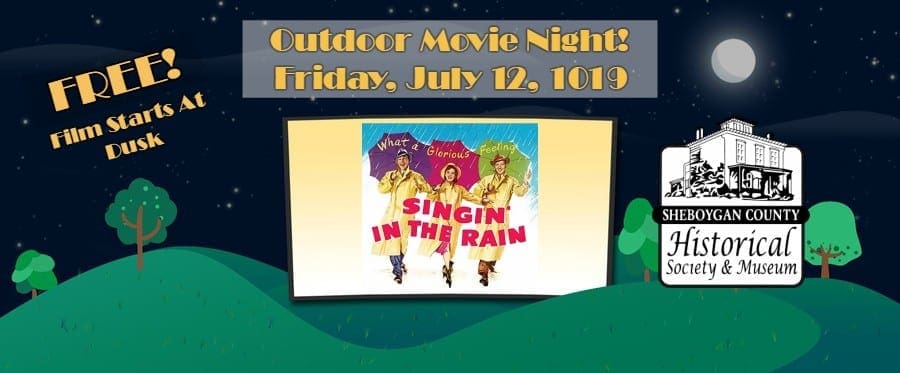


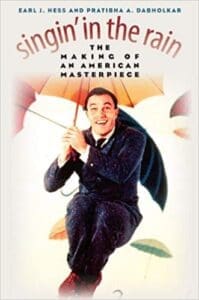

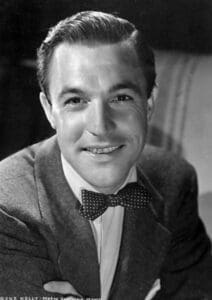
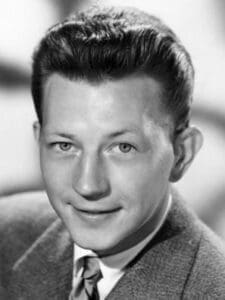
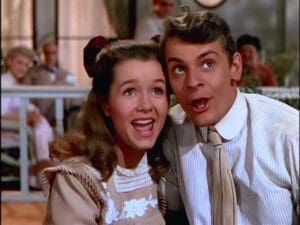
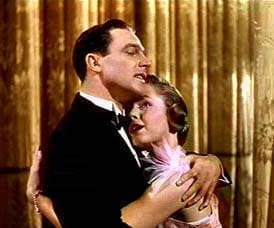
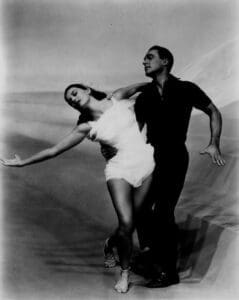
0 Comments